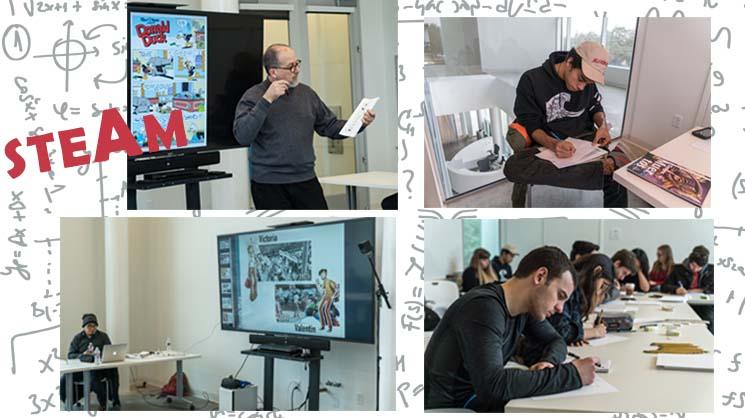The mixing of arts and science is not as rare as you might think. Leonardo da Vinci combined both to create masterpieces.
A collaboration between Rice University’s Department of Bioengineering, the Department of Visual and Dramatic Arts, and the Center for Written, Oral, and Visual Communication is offering an engaging comics-inspired seminar series that teaches students to successfully combine words and pictures.
The two-year enhanced engineering education program will bring notable cartoonists to take students on a creative journey about shaping the delivery of technical messages in science, technology, engineering and math, or STEM.
This spring cartoonists Paul Karasik and Augusto Mora taught at Rice’s new Moody Center for the Arts.
“Each semester, undergraduate students taking capstone bioengineering and global health design courses will be required to attend a three-event series that consists of two invited comic artist seminars and a workshop by Rice Associate Professor Christopher Sperandio,” said Jane Grande-Allen, the Isabel C. Cameron Professor and chair of the Department of Bioengineering.
Sperandio, a co-principal investigator in the program with Grande-Allen, is an artist-educator who has worked extensively using the mediums of drawing, sculpture, graphic novels and comic books. He appreciates the skill required to explain complex scientific topics in a limited space.
“By explaining the creative processes cartoonists use to develop sequential visual messages, we hope to help engineering students explain the impact of a study, present technical data in a scientific poster or presentation, or develop visual directions on how to use a medical device,” said Sperandio.
In addition to the seminars from the visiting cartoonists, Sperandio’s workshop incorporates pedagogical training methods from Rice’s Center for Written, Oral, and Visual Communication with his own expertise to expose students to something completely new while leveraging technical education.
The program comes in advance of when the students give their final poster presentations and compete in the Rice Undergraduate Research Symposium held Wednesday, April 11.
“The development of accomplished communication skills has always been an integral part of our program educational objectives,” Grande-Allen said. “This program mixes unique perspectives in adopting visual explanations to communicate technical work effectively and across audiences.”
Although the series is a pilot program in bioengineering and global health through funding by Rice’s George R. Brown School of Engineering, Grande-Allen says she hopes to expand the course to other engineering courses and schools at Rice.

